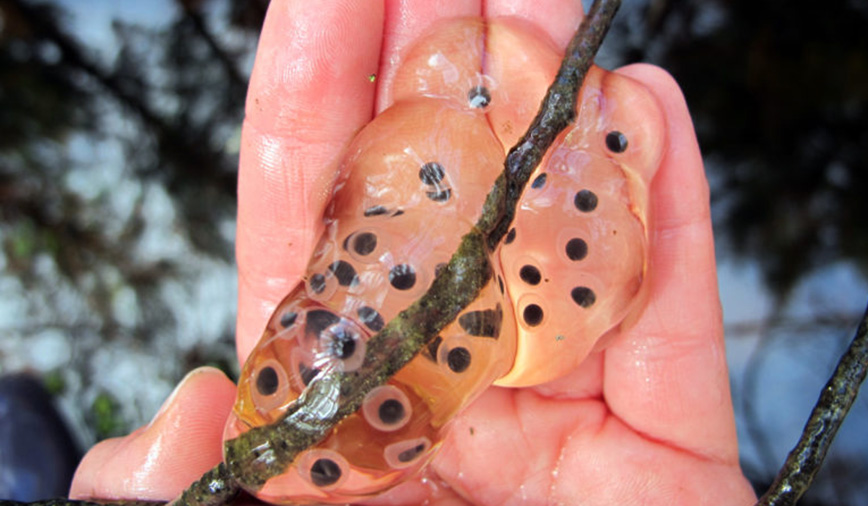Pam’s Perspective
C:\Users\selm\Desktop\P1010348.JPG
From the…
Pam Otto is the Manager of Natural Programs and Interpretive Services for the St. Charles Park District
April 19, 2013
“It was the best of times, it was the worst of times…”
Gosh, I can’t tell you how many times I’ve wanted to start a column with a famous opening line like that.
Now, finally, I have a reason: It’s salamander season!
A few weeks ago, with snow on the ground and ice still present in our area’s vernal, or temporary spring-season, pools, adult salamanders surfaced from their burrows and traveled down to the chilly water. There, guided by instinct, pheromones and more than a little luck, they “mated”—males deposited spermatophores, females picked them up and, soon after, laid masses of fertilized eggs.
Aside from a little splishing and splashing, the activity occurred quietly—a stark contrast to the noisy goings-on of our other amphibian neighbors, the frogs—and now the adult tigers are back in their burrows, where they’ll spend the next 11months or so until springtime comes again.
Meanwhile, back in the ponds, the eggs soon will be hatching. Tiny tiger salamander larvae, each complete with four legs and a set of feathery gills, will then start competing for any and all available prey—aquatic insects, tadpoles, even each other—as they race toward maturity.
This year, weather conditions seem to be favoring salamander larvae development. Those vernal pools, also known as ephemeral ponds, won’t be going away any time soon.
As they mature, the larvae’s gills give way to lungs. After three months or so, the little creatures make their way up onto the land and, soon thereafter, under the ground.
Although capable of digging their own burrows, tiger salamanders as often as not take advantage of ready-made homes like chipmunk and ground squirrel burrows. There they feed on any number of invertebrates, including insects, earthworms and slugs.
When moisture is plentiful and food is abundant—the conditions we have right now—it truly is the best of times for salamanders.
So if things are good for salamanders now, what exactly constitutes the worst of times?
Well, one recent example would be the high heat and extreme dryness of 2012. There’s no real way of knowing what toll the drought took on our local Ambystoma tigrinum population, but I have a feeling more than a few were lost. Adults, with their fossorial, or burrowing, nature, likely fared better than juveniles, whose temporary ponds probably dried up before metamorphosis could occur.
Then there’s the sad story of one salamander in particular.
The little tiger came to our attention last week when Mike Swanson, the dedicated volunteer who maintains Hickory Knolls’ bluebird and purple martin houses, called and said he’d found something unusual. Prepping the martin houses for the coming season, Mike lifted the roof off of one houses and came face to face with what at first looked like a dried-out lizard.
After closer examination and a little research, Mike correctly identified the creature as a salamander.
But how in the world did it get into the attic of a martin house, a structure that sits a dozen or more feet in the air?
Mike at first hypothesized that a Hickory Knolls exhibit animal had escaped, crept through the building and down the stairs to the basement, where the martin houses had been stored for a while this past winter. But this theory was struck down when we surveyed our displays and found all three of our sallies safe and sound.
Denis Kania, the park district’s restoration manager, thought maybe the martin house had last fall spent some time on the ground behind our maintenance garage—an area very near some prime salamander habitat. But Mike said this house had not.
Which brings us to another of Mike’s theories: A bird of prey, perhaps a great horned owl, a species known to frequent martin houses in hopes of snagging something purple for dinner, carried the tiger there in its talons. The bird then may have dropped it on a ledge, from which it crawled inside and dried out.
Fact is, we may never know how the salamander, a creature of ponds and moist burrows, came to be mummified in the arid climate of a martin house attic.
While its life has past, its legacy lives on. Today the crispy salamander holds a place of honor on a desk in the naturalists’ offices at Hickory Knolls. Safely ensconced in a Ziploc bag, the salamander is a genuine natural-history mystery that provokes speculation from all who see it.
As I gaze into the tiny spots that were once its eyes, I can almost hear the salamander relate the details of its brief but action-packed life:
“Call me Ishmael.”
Pam Otto is the manager of nature programs and interpretive services at the Hickory Knolls Discovery Center, a facility of the St. Charles Park District. She can be reached at 630-513-4346 or potto@stcparks.org.

